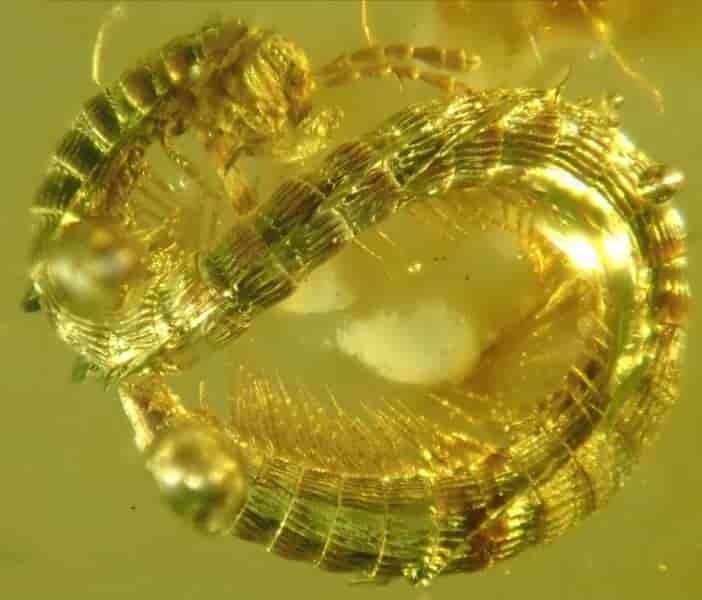Even though we are led to believe that during the Cretaceous the Earth used to be an exclusive home for fearsome giants, including carnivorous velociraptors and arthropods larger than a modern adult human, it turns out that there was still room for harmless minute invertebrates measuring only several millimetres.
Such is the case of a tiny millipede of only 8.2 mm in length, recently found in 99-million-year-old amber in Myanmar. Using the latest research technologies, the scientists concluded that not only were they handling the first fossil millipede of the order (Callipodida) and also the smallest amongst its contemporary relatives, but that its morphology was so unusual that it drastically deviated from its contemporary relatives.
As a result, Prof. Pavel Stoev of the National Museum of Natural History (Bulgaria) together with his colleagues Dr. Thomas Wesener and Leif Moritz of the Zoological Research Museum Alexander Koenig (Germany) had to revise the current millipede classification and introduce a new suborder. To put it in perspective, there have only been a handful of millipede suborders erected in the last 50 years. The findings are published in the open-access journal ZooKeys.
